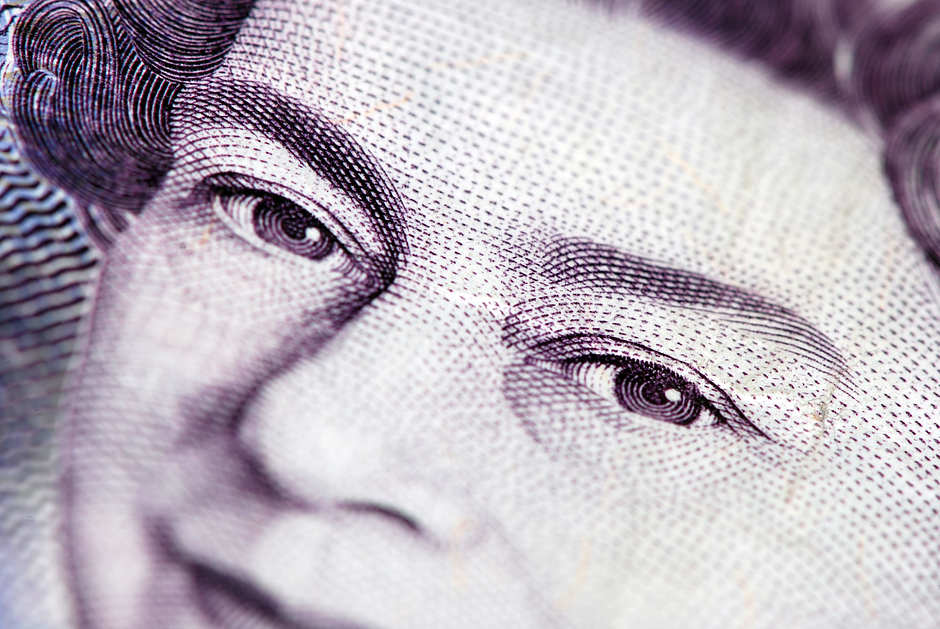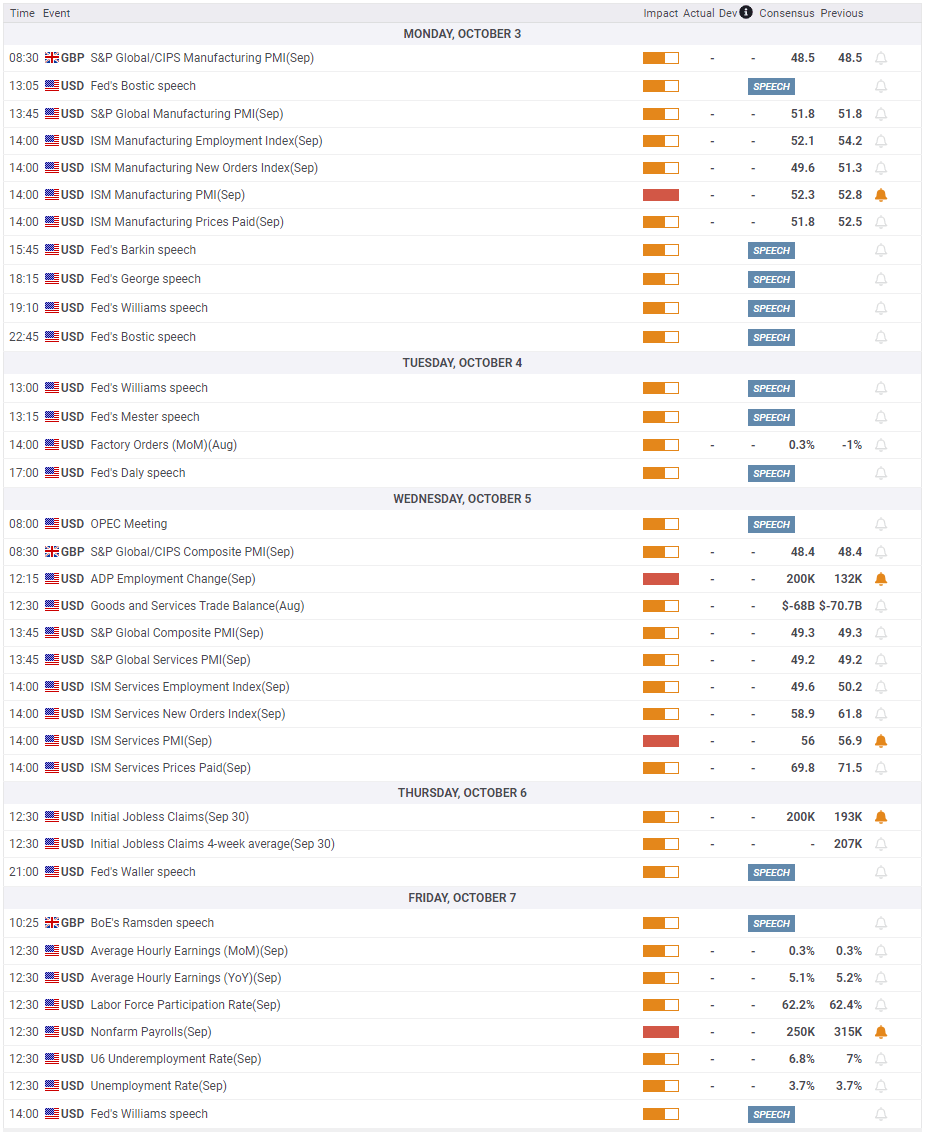GBP/USD Weekly Forecast: Pound's fate depends on market confidence in UK government
- GBP/USD ended up posting weekly gains despite Monday's massive sterling selloff.
- BoE had to step in following the market reaction to the UK's controversial mini-budget.
- The pair needs to flip 1.1300 into support to extend its rebound.

It has been a crazy volatile week for the British pound following the presentation of the highly controversial mini-budget. After having plunged to a new all-time low of 1.0340 at the beginning of the week, GBP/USD reversed its direction and advanced beyond 1.1200 early Friday. Although the pair lost its bullish momentum ahead of the weekend, it ended up closing the week in positive territory. September jobs report from the US and political developments in the UK will be watched closely by market participants next week.
What happened last week?
The British government's plan to lower taxes and ramp up public borrowing revived fears over the fiscal policy pushing the economy toward an unsustainable debt path and triggering a brutal gilt sell-off. Following Friday’s 9% increase, the 10-year UK government bond yield rose 11% early Monday and reached its highest level since October 2008. Thin liquidity conditions during the Asian trading hours amplified the negative impact of the market reaction to the mini-budget on sterling, causing GBP/USD to lose over 500 pips in a few hours. The pair managed to erase a portion of its daily losses during the European trading hours amid market chatter suggesting that the Bank of England (BoE) was preparing to make a statement. Later in the day, the BoE said that they were monitoring developments in financial markets very closely while noting that they welcomed the government’s commitment to sustainable economic growth. The BoE’s inaction made it difficult for the British pound to find demand in the second half of the day.
Although the gilt sell-off continued on Tuesday, GBP/USD managed to hold its ground at around 1.0800. While commenting on the market turmoil, BoE Chief Economist Huw Pill reassured investors that they will deliver a significant monetary policy response. Meanwhile, the data from the US showed that the 1-year Consumer Inflation Rate Expectations of the Conference Board’s Consumer Confidence Survey declined to 6.8% from 7%, limiting the dollar’s gains and allowing GBP/USD to stay in a consolidation stage.
On Wednesday, the BoE announced that it will carry out temporary purchases of long-dated UK government bonds to restore market functioning. The immediate reaction provided a boost to the British pound. GBP/USD, however, failed to preserve its bullish momentum as the BoE noted that the new bond-buying programme will not affect the MPC’s annual target of £80 billion stock reduction. Nevertheless, the pair ended up gaining more than 1% on a daily basis. Meanwhile, Sky News reported that British Finance Minister Kwasi Kwarteng would not resign over the market’s response to the fiscal plan and that there were no plans for a reversal of the policy.
The renewed selling pressure surrounding the greenback helped GBP/USD extend its rebound in the second half of the week and the pair climbed above 1.1200 during the European trading hours on Friday. The weekly report published by the US Department of Labor revealed that the weekly Initial Jobless Claims declined to 193K from 209K but this data failed to support the dollar. Speaking again on Thursday, BoE Chief Economist Pill said that the intervention in the gilt market was not intended to cap or control longer-term interest rates or to offer more favorable underlying financing conditions to the institutions involved.
On Friday, the UK’s Office for National Statistics revised the annualized Gross Domestic Product growth for the second quarter to 4.4% from 2.9% in the flash estimate, allowing the pair’s bullish bias to stay intact. The US Bureau of Economic Analysis announced later in the day that the Personal Consumption Expenditures (PCE) Price Index declined to 6.2% on a yearly basis in August from 6.4% in July. The Core PCE Price Index, the Federal Reserve's preferred gauge of inflation, edged higher to 4.9% from 4.7% in July in the same period. Markets largely ignored these figures and GBP/USD held its ground and closed the week in positive territory despite having retreated from Friday's tops.
Next week
Despite GBP/USD’s decisive rebound, investors could see it risky to bet on further pound strength in the near term. The UK government made it clear that they don’t have any plans to adjust the mini-budget and some estimates suggest that rising mortgage costs will offset any potential financial relief provided to households via tax cuts and energy price caps. Citing data from Moneyfacts, the Guardian reported that more than 40% of available mortgages had been withdrawn from the market since the UK government’s unveiling of its mini-budget.
British Prime Minister Liz Truss and Finance Minister Kwasi Kwarteng will likely face heavy criticism and political pressure in the coming days. In case the UK government changes its stance and looks to adjust its fiscal plan so it doesn’t go against the BoE’s monetary policy, GBP/USD could gather bullish momentum. It’s worth noting, however, the BoE could back away from a super-size rate hike in that scenario and limit the pound’s potential gains.
Since there won’t be any high-impact data releases from the UK next week, political headlines and the developments in the UK gilt market will be watched closely by investors.
On Monday, the ISM will release its Manufacturing PMI report for September. The Price Paid Component of the survey, which dropped to 52.5 in August from 55.5 in July, could influence the dollar’s performance. A reading below 50 should weigh on the USD and an unexpected increase from the August level is likely to have the opposite effect.
The ADP’s private sector employment report will be released on Wednesday ahead of the US Bureau of Labor Statistics' highly-anticipated Nonfarm Payrolls (NFP) data on Friday. Investors expect the NFP to rise by 250K following August’s better-than-forecast increase of 315K. The Fed is content with the tightness of the US labor market and policymakers are unlikely to shift their stance even if the NFP print falls short of experts’ projections. The Fed’s latest Summary of Economic Projections showed that officials see the year-end jobless rate at 3.8% in 2022 and 4.4% in 2023. The Unemployment Rate stood at 3.7% in August and it’s expected to stay unchanged at that level in September. Nevertheless, the initial market reaction should be straightforward with an upbeat NFP figure weighing on GBP/USD and vice versa.
GBP/USD technical outlook
The Relative Strength Index (RSI) indicator on the daily chart climbed out of the oversold territory on Wednesday and edged higher toward 40, suggesting that GBP/USD is currently in a recovery phase. On the upside, 1.1300 (Fibonacci 38.2% retracement of the latest downtrend, 20-day SMA) aligns as initial resistance. In case the pair rises above that level and starts using it as support, it could target 1.1460 (Fibonacci 50% retracement) and 1.1500 (psychological level) next.
On the downside, first support is located at 1.1050 (Fibonacci 23.6% retracement) ahead of 1.1000 (psychological level) and 1.0900 (static level, psychological level).
GBP/USD sentiment poll
FXStreet Forecast Poll shows that experts don't expect a decisive rebound in the near term with the one-week average target sitting at 1.1034. There is a bullish tilt in the one-month outlook.
Premium
You have reached your limit of 3 free articles for this month.
Start your subscription and get access to all our original articles.
Author

Eren Sengezer
FXStreet
As an economist at heart, Eren Sengezer specializes in the assessment of the short-term and long-term impacts of macroeconomic data, central bank policies and political developments on financial assets.




















